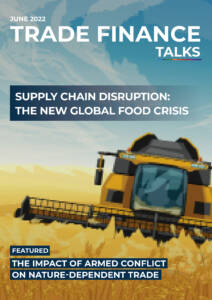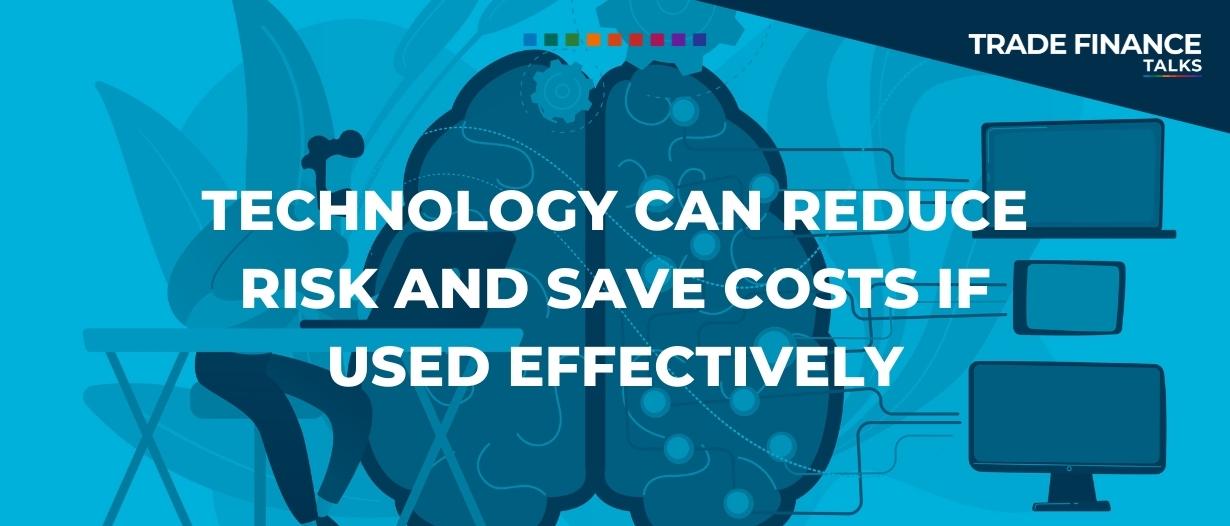Listen to this podcast on Spotify, Apple Podcasts, Podbean, Podtail, ListenNotes, TuneIn
With the current macroeconomic and geopolitical landscape looking fairly bleak, financial risk management and the ability for businesses to adapt quickly to changing conditions have never been more important and technology has a role to play in both.
Since the beginning of 2022, there has been a marked increase in payment default risks, largely due to post-COVID fallout and the increasingly tough macro-economic environment catalysed by the Russia-Ukraine conflict.
TFG spoke to two leading trade credit risk management experts on how technology has the potential to help businesses avoid some of the costs and stresses associated with current economic conditions.
This period has definitely had its upsides despite all the doom and gloom.
Marian Berden, expert business analyst at SCHUMANN International Ltd, thinks that the last few years have helped to accelerate the pace of modernisation, encouraging the adoption of new digital technologies that enable businesses to work remotely and more efficiently.
According to Robert Meters, director at SCHUMANN International Ltd, these changes have particularly affected the finance sector, which has already begun to evolve into a much more dynamic field.
“Digital transformation has been very pronounced in finance functions,” Meters said.
“Since finance has to manage a complex set of risks, it must have the right information at the right time to support decision-making and planning in a complex, unpredictable, and ever-changing world.
“Technology is a key competitive advantage to finance teams.”
In terms of risk management, technology can help beat the two main dangers facing businesses and economies right now: inflation and geopolitical risk.

Fighting inflation and geopolitical risk
Here, machine learning and artificial intelligence have a role to play in alleviating some of the pain and chaos associated with these types of risks.
For instance, they enable the real-time improvement and refinement of processes such as credit score ratings, which are usually updated by humans on a regular basis using historical findings.
This has the potential to save businesses a lot of time and help them respond much quicker to a change in the financial environment.
Such solutions are already revolutionising the decision-making process in trade credit risk assessment, business onboarding, fraud and risk detection, default prevention, and liquidity forecasting.
Inflation, goods shortages, and energy security are real worries when it comes to political risks such as the conflict in Ukraine.
“Shortages in the energy market and in raw materials lead to price increases and disruptions in supply chains,” Meters said.
“More than 15 countries depend on Russian gas for over 50% of their needs and more than 30% of the world’s wheat harvest comes from Russia and Ukraine.
“In addition, important precious metals for the production of technological components also come from Russia and Ukraine.”
Naturally, this leads to significant problems with the availability of energy and raw materials and price increases that can threaten existing contractual obligations.
Financial management software
Having access to good financial management software can make decision-making easier during uncertain times.
This is because it provides a joined-up way to pull systems and information together that allows businesses to manage situations as cost-effectively as possible.
“Our software helps you pull everything together, in one place, for one team to manage the work, monitor the risk, and report the data,” Meters said.
“Users can configure it to how they work, we don’t force companies into one system or set of processes.”

Adaptability is key
The current insolvency environment is complicated and fast-evolving.
Although many experts had been expecting a wave of bankruptcies at the start of the pandemic in early 2020, rapid government intervention has prevented these bankruptcies.
That being said, many credit risk managers are aware that this situation might not last.
“The tide has to turn at some point, and you see most credit insurers predicting a substantial increase in insolvencies for this year and next,” Meters said.
“Where exactly the impact will be is hard to say and it will depend on how we can manage through the macroeconomic trends this year.”
It is a complex picture to pull together for risk managers.
To maintain a competitive edge, businesses today must diversify and be as adaptable as possible to the current environment.
“The most successful businesses are those who can manage shocks or even turn them to their advantage,” Berden said.
“This is not an easy feat to accomplish, but technology and digital transformation are very key in all this.”
Read the latest issue of Trade Finance Talks, June 2022





























